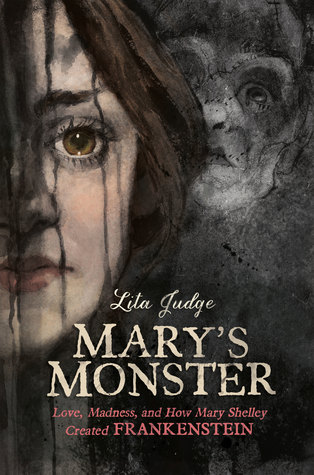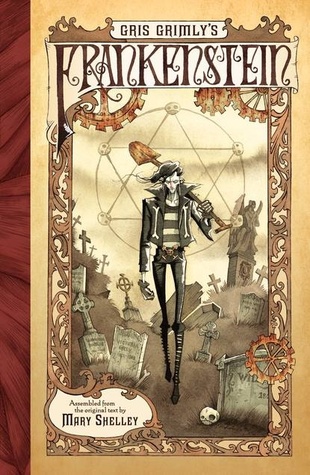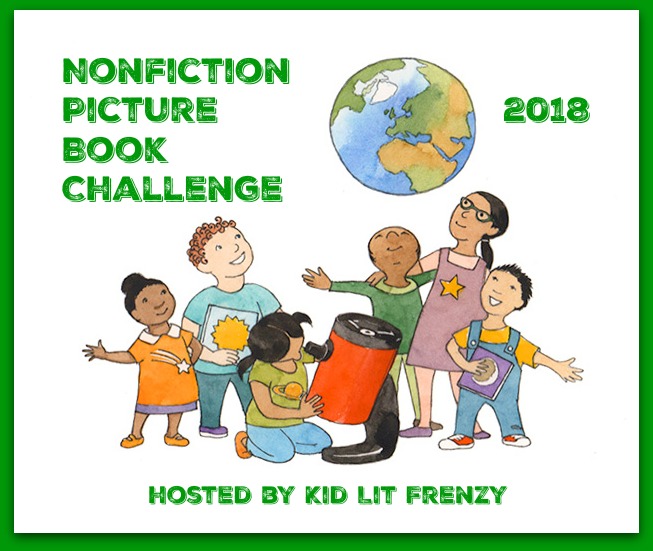Mary's Monster: Love, Madness, and How Mary Shelley Created Frankenstein
by Lita Judge
Roaring Brook Press (January 30, 2018)
Nonfiction * Biography * Literary
Audience: Young Adult
Indiebound | WorldCat
Description from GoodReads:
A young adult biography of Frankenstein's profound young author, Mary Shelley, coinciding with the 200th anniversary of its publication, told through free verse and 300+ full-bleed illustrations.
Mary Shelley first began penning Frankenstein as part of a dare to write a ghost story, but the seeds of that story were planted long before that night. Mary, just nineteen years old at the time, had been living on her own for three years and had already lost a baby days after birth. She was deeply in love with famed poet Percy Bysshe Shelley, a mad man who both enthralled and terrified her, and her relationship with him was rife with scandal and ridicule. But rather than let it crush her, Mary fueled her grief, pain, and passion into a book that the world has still not forgotten 200 years later.
Dark, intense, and beautiful, this free-verse novel with over 300 pages of gorgeous black-and-white watercolor illustrations is a unique and unforgettable depiction of one of the greatest authors of all time.
Official Book Trailer:
The Making of Mary's Monster:
Thoughts on the book:
As I wind-up Women's History Month and transition to National Poetry Month in April, I am celebrating with Lita Judge's Mary's Monster: Love, Madness, and how Mary Shelley Created Frankenstein. I have been a huge fan of Lita's picture books and was excited to find out about her latest book, which is so very different from anything that she has done before.
When I first learned that Mary Shelley wrote Frankenstein when she was essentially a teenager, I was amazed. Not only did she write a powerful book as a teenager but a young woman during a time period when women had very little choice. I wonder what Shelley would think if she knew that 200 years later her novel continues to be read and taught in classes all over the country.
Judge reaches back into history to bring Mary Shelley to present day readers. Through the reading of Shelley's journal, and the work of Percy Bysshe Shelley, and the poetry of Lord Byron, along with a biography on Mary Wollstonecraft, Judge crafted an intimate look at Shelley's life.
I loved that Judge choose to write this book as a collection of free verse poems accompanied by 300 pages of illustrations.
Thank you Lita for such a beautiful book to celebrate the life and work of Mary Shelley.
Additional Resources:
Mary's Monster Timeline - Definitely check out this post by Lita, here
The History Chicks: Mini Podcast - Mary Shelley
Interview with Lita Judge on The Mary Sue, here
And for an illustrated version of Mary Shelley's Frankenstein, I recommend Gris Grimmly's Frankenstein.
A couple of years ago, I got to see the taped version of the National Theatre's (London) Adaptation of Frankenstein. I am hoping that some day they will release the video for more people to see. It was amazing.
About the author:
Lita Judge is the author and illustrator of several award-winning picture books including How Big Were Dinosaurs?, Bird Talk, Born in the Wild, Flight School, and Red Sled. After a summer spent reading Mary Shelley's handwritten journals, Lita embarked on a five-year journey to tell the story of this courageous teenager. She lives in Peterborough, New Hampshire. Website | Twitter
Artwork by Sarah S. Brannen ©2017
Don't forget to link up your nonfiction reviews...










































